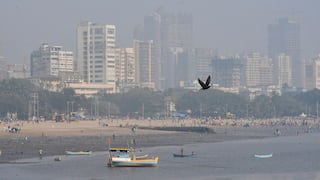Explorer
Advertisement
Delhi Air Pollution: Stubble Burning Contribution To Shoot Up As 1,230 Farm Fires Reported In Single Day
Delhi Air Pollution: Early morning visuals of the national capital showed a thick layer of smog blanketing places like ITO, Akshardham, Ghaziabad and other places of NCR. Here's a look at how the pollution level of Delhi is on rise.

Delhi Air Pollution: Air Quality in the national capital continues to remain ‘poor’ for the residents on Monday morning despite a slight dip in pollution level due to favourable wind. A layer of haze could be seen blanketing the place in the visuals of morning.
Also Read | Delhi Air Pollution On The Rise; Is Stubble Burning To Be Blamed Again?
Early morning visuals from ITO, Ghazipur, and Akshardham showed a thick layer of smog hampering the visibility in the area. PM 2.5 at 241 (poor) in ITO, at 151 (moderate) around Lodhi Road and 249 (poor) in RK Puram as per Central Pollution Control Board (CPCB) data.
Stubble Burning Contribution Likely To Increase:
On Sunday, a central government agency reported 1,230 farm fires in Delhi's neighbouring states - the maximum in a day so far this season.
As per Ministry of Earth Sciences' Air Quality Early Warning System for Delhi, the share of stubble burning in the city's pollution is likely to increase. It said the impact of stubble burning is "restricted because of better mixing height and ventilation", but it is likely to rise on Monday.
The share of stubble burning in Delhi's PM2.5 pollution stood at 17 per cent on Sunday. It was 19 per cent on Saturday, 18 per cent on Friday, around one per cent on Wednesday and around 3 per cent on Tuesday, Monday and Sunday.
What are the factors contributing to Delhi’s pollution?
As per a Met Department official the winds which are blowing from the northwest bring pollutants from the farms due to stubble burning, while at night due to the calm winds and low temperatures the pollutants accumulate overnight.
The ventilation index was 11,500 metre square per second on Sunday and is likely to be 10,000 metre square per second on Monday which is favourable for the dispersion of pollutants. Ventilation Index is a product of mixing depth and average wind speed, Mixing depth is the vertical height at which pollutants are suspended in the air. It reduces on cold days with calm wind speed.
A ventilation index lower than 6,000 sqm/second, with an average wind speed of less than 10 kmph, is unfavourable for the dispersal of pollutants.
Union Environment Minister Prakash Javadekar had on Sunday said the major factors behind air pollution in the country are traffic, industries, waste, dust, stubble, geography and meteorology.
(with PTI inputs)
Follow Breaking News on ABP Live for more latest stories and trending topics. Watch breaking news and top headlines online on ABP News LIVE TV
View More
Advertisement
Trending News
Advertisement
Advertisement
Top Headlines
Cities
Trending
Cities
World
Advertisement


Sayantan Ghosh
Opinion




































